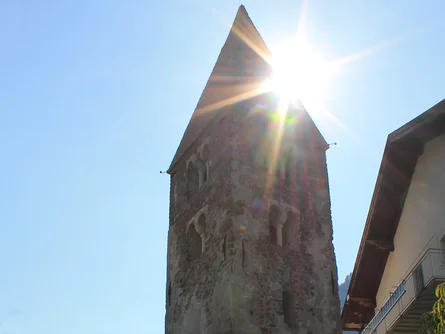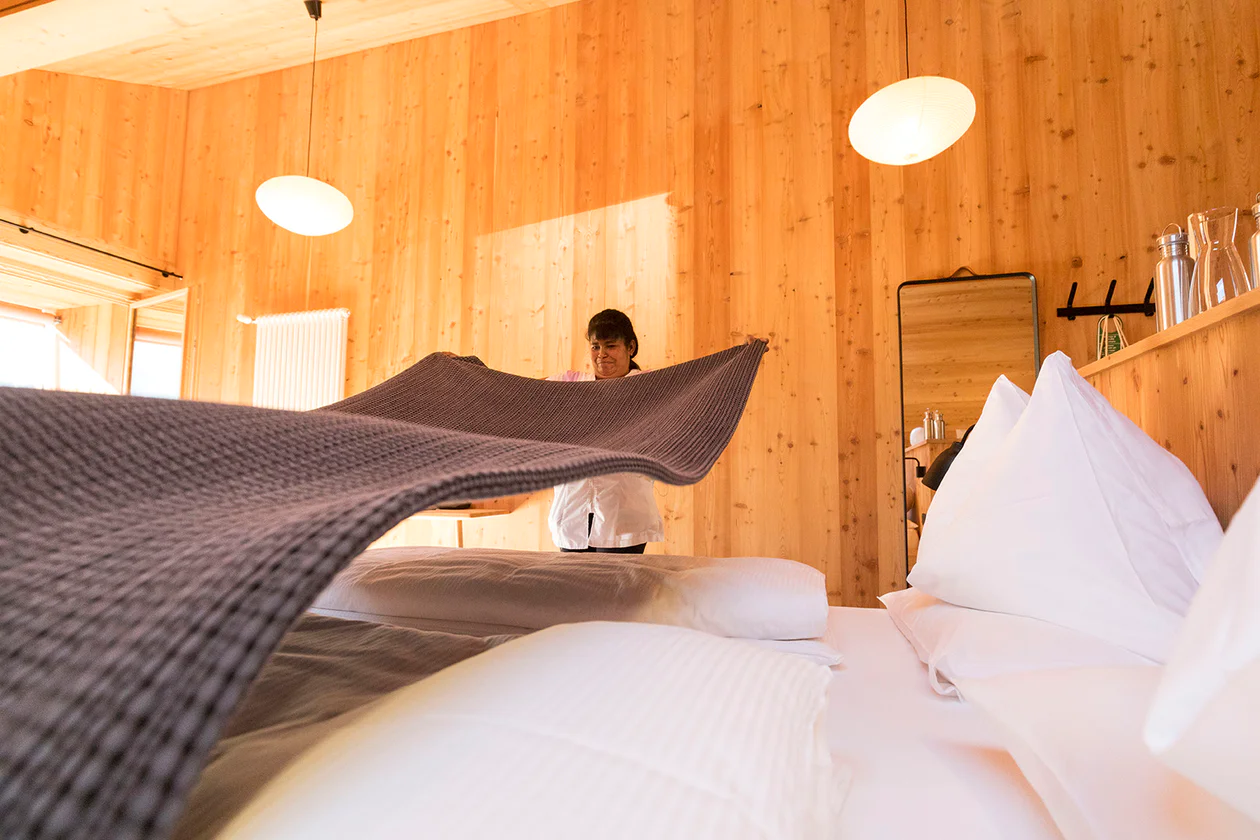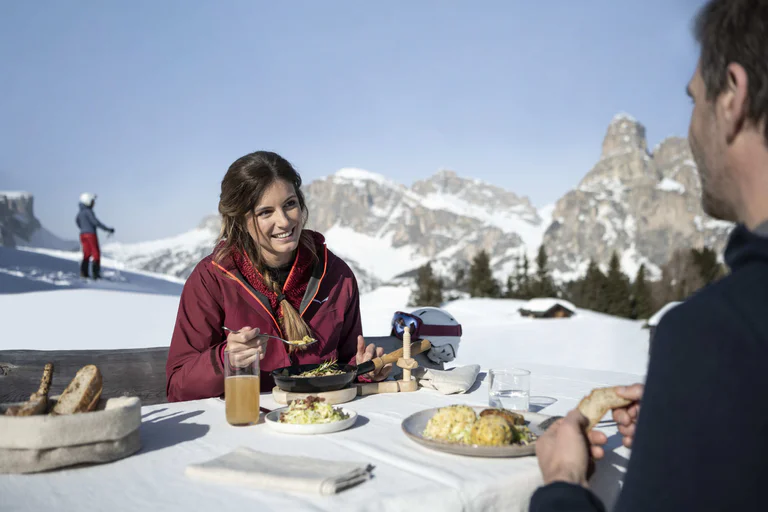The tower in the Vadena district of Birti is the last remnant of the curacy church of St. Mary Magdalene from the 14th century. It is 24.6 m high and the walls are 70 to 90 cm thick. You can see the bricked-up arched windows on each side, only one is still open and intact. At that time, three bells hung in the tower, two smaller and one large. The brick helmet is damaged at its top, as the wind had thrown the button off the tower in 1743/44. Due to its very unfavourable location on the open valley floor, the Madgalena Church was hit by countless Adige floods. The church was flooded in 1755. The citizens of Vadena therefore thought about moving the church to the castle chapel in the courtyard of Vadena. In 1794, the church had to be abandoned after further numerous floods, because the water exceeded the altar refectory and the death chests floated around like ships. On 2 July 1795, a contract was concluded between the castle chapel owner Menz and the neighbours in Vadena and the castle chapel was designated as the new curacy church. In 1796, the Church of Mary Magdalene was demolished, only the tower still reminds us of the location of the old church.

















































































